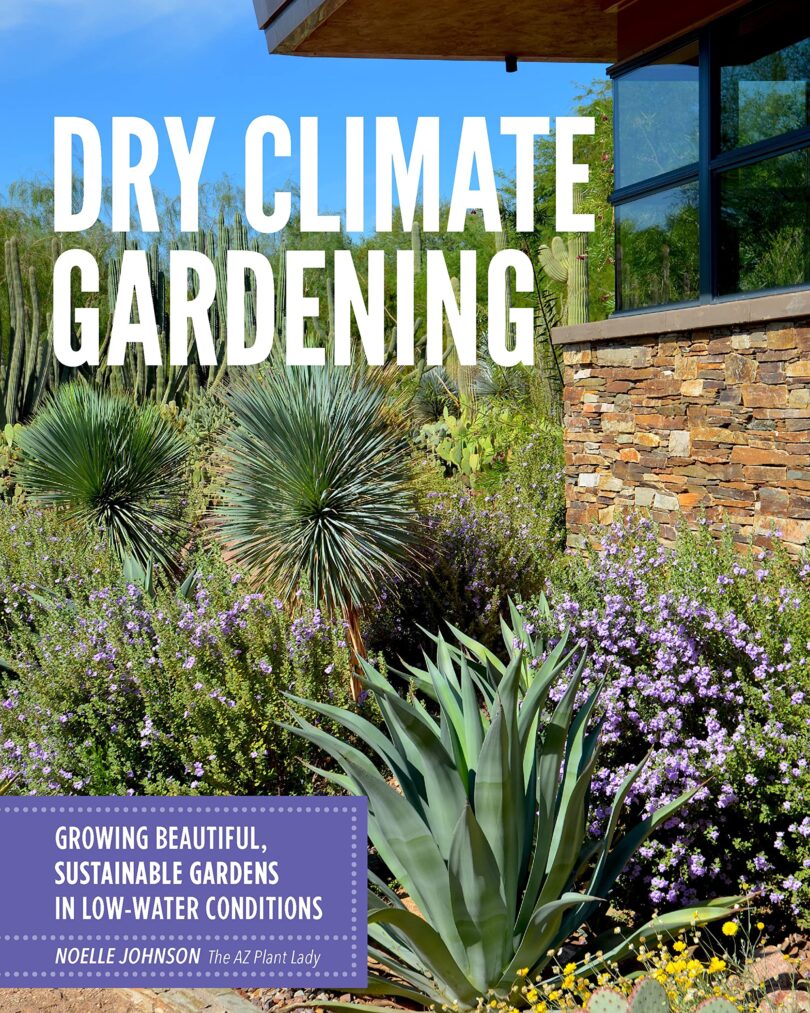
Price: [price_with_discount]
(as of [price_update_date] – Details)

[ad_1]
In Dry Climate Gardening, author and desert horticulturist Noelle Johnson, also known as AZ Plant Lady, delivers all the know-how you need to grow a breathtaking, colorful, and vibrant garden in low-water conditions.
Gardening in an arid climate doesn’t have to mean a yard full of rocks with a few cacti plunked in. With careful plant selection and thoughtful design, you can create a low-water landscape that’s an oasis for humans and wildlife alike. There are hundreds of plants well-suited to xeric conditions, and with the proper care, they create a living desert landscape that will stop passersby in their tracks. Let Dry Climate Gardening be your guide to crafting a climate-appropriate outdoor living space that’s the envy of the neighborhood, whether you live in the American Southwest, the Mediterranean region, or any other arid climate.
Inside you’ll find:
The best arid-adapted plants to feature in your landscape Information on which plants struggle in dry climates and how to avoid them The five “desert seasons” and which are best for planting How to handle desert soils Plant care techniques specific to dry climates, including pruning, fertilizing, and more How to design a planting for maximum impact and minimal water needs Plant profiles and charts for every category, from trees and shrubs to groundcovers, vines, succulents, and perennials Sample garden designs and plant lists you can adapt to your own space
With water restrictions and the number of gardeners dealing with drought conditions on the rise, we all need to get more creative in the way we grow. Water-wise landscaping is a must for millions of gardeners. In Dry Climate Gardening, you’ll learn how to do it with care and style.
From the Publisher
For Those Who Yearn for a Beautiful Garden in the Midst of a Dry Land…




Welcome to Gardening in a Dry Climate
Does the thought of creating a garden in a dry climate feel intimidating to you? It is not surprising in a region where scarce rain and low humidity are the norms. However, when you throw in sizzling hot summer temperatures, that adds another element of stress for plants and you. It can be overwhelming as our seasons are different from everywhere else. You don’t have to look far to hear news of changing weather patterns that translate into increasing drought conditions and record-breaking temperatures. Perhaps you have even seen the effects of climate change in your garden, with established plants showing new signs of stress.






Watering
Water is a precious resource in arid or semi-arid regions. We celebrate when it rains and, conversely, are becoming more familiar with ever-increasing periods of drought. Yes, we can create vibrant gardens filled with beauty that will thrive, but we must consider plants’ watering needs and find ways to eliminate wasting water.
Fertilizing
One characteristic trait of plants native to arid regions is that they don’t require highly fertile soil. This adaptation confuses many people who believe that all plants need supplemental fertilizer. However, plants adapted to living in dry climates come from regions with low nutrient levels in the soil. Fertilizing plants like these often result in a floppy flush of foliage and can even reduce flowering on blooming plants.
Pruning
Trees, shrubs, and other leafy plants need pruning to keep them healthy and structurally sound, but they don’t need to be pruned into unnatural shapes that turn them into green “blobs” dotting your garden. We add plants outside our homes to add beauty, but frequent, formal pruning does just the opposite as it strips the shrubs of their unique shapes that add welcome texture to the landscape.


Using Plants to Decorate Your Outdoor Space
The easiest way to add interest to your landscape is by adding color. We do the same thing inside our homes by adding a vibrant color as an accent to attract attention. For outdoor spaces, most homeowners say they want more color. People are naturally attracted to color, which is an excellent way to up your home’s curb appeal without spending much money. Within arid and semi-arid regions, you’ll find plants with varying shades of green, from lush, saturated greens to softer tones with a gray or bluish tint. Combining plants with different foliage colors creates a nice contrast and adds a lovely backdrop for colorful blooms.








Texas Mountain Laurel (Dermatophyllum secundiflorum)
The dark green foliage and small size of this tree make it a great foundation plant in smaller spaces such as a courtyard or patio. In spring, large clusters of purple flowers are produced with the delightful fragrance of grape candy. The flowering period lasts just a few weeks, and light tan seedpods soon follow. Within each pod is a toxic red seed, but seedpods can be cut off if desired. The natural growth habit of Texas mountain laurel is a large shrub and can be utilized as an evergreen screen. Alternatively, it can be trained into tree form. ‘Silver Peso’ is a variety with silvery-gray foliage. Prune after flowering to the desired shape but don’t shear.
Black Dalea (Dalea frutescens)
The lacy green foliage of this mounding shrub is composed of tiny, medium-green leaflets. However, don’t let its delicate appearance fool you—black dalea is one tough plant. Vibrant purple flowers appear in fall, which attracts bees. In addition, they have a lovely, mounded growth habit, adding an attractive softness to the landscape. Use it near spiky succulents like a desert spoon or golden barrel cacti to showcase its finely textured foliage. Black dalea also looks lovely next to the yellow-flowering turpentine bush, which also blooms in fall. Prune back every other year in spring to half its size.
Coral Fountain (Russelia equisetiformis)
Bright green foliage comprises narrow stems with a weeping shape, which adds a soft, flowing texture to the garden. The thin orange-red flowers appear throughout the warm season, attracting hummingbirds. While a coral fountain can be invasive in tropical regions, that isn’t true when grown in dry climate gardens where it thrives with supplemental irrigation. Use them in high-profile areas where their beauty can be appreciated, such as near an entry, patio, or window. Coral fountain is also suitable for growing in a large container. Major pruning isn’t needed every year unless there is frost damage. For mature plants, focus pruning on removing one-third of stems at the base of the plant.
Santa Rita Prickly Pear (Opuntia santa-rita)
The attractive blue-gray color of this cactus stands apart from other species of prickly pear due to the shades of purple coloring that are more pronounced in cold weather. The stems are paddle-shaped and covered in tiny hairlike bristles called glochids, along with a few longer spines. In late spring, large yellow flowers appear, which contrast beautifully with the cool color of the pads. Edible fruits follow the flowers. Use Santa Rita prickly pear near yellow-flowering perennials and shrubs to emphasize its color. As with most species of prickly pear, keep away from high-traffic areas as its glochids and spines are extremely irritating to the skin.
Publisher : Cool Springs Press (March 7, 2023)
Language : English
Paperback : 208 pages
ISBN-10 : 0760377022
ISBN-13 : 978-0760377024
Item Weight : 1.59 pounds
Dimensions : 8.05 x 0.6 x 11.25 inches





